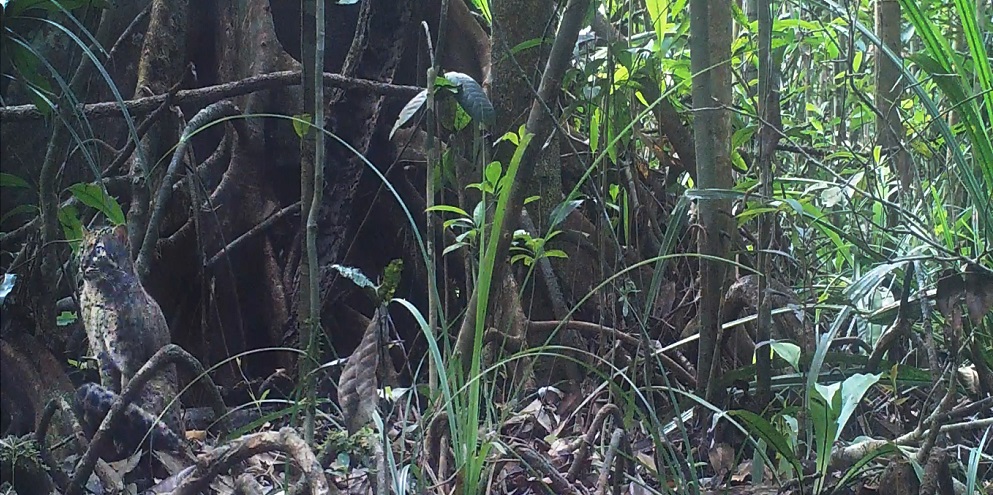September 01, 2020
Meet the Marbled Cat (Pardofelis marmorata), a small wild cat belonging to the Felidae (cat) family.
It’s one of five of Sumatra’s wild cat species that have been identified in the Restorasi Ekosistem Riau (RER) area within the Kampar Peninsula. The cat is native from the eastern Himalayas to Southeast Asia. It is also found in Indonesia where it is known as Kucing Batu.
The Marbled Cat used to be listed as Vulnerable in the 2008 assessment, but in 2015 assessment its status has was improved to Near Threatened on the International Union for Conservation of Nature (IUCN) Red List. It is also protected under Appendix I of the Convention on International Trade in Endangered Species (CITES).

The change in status of the Marbled Cat must not be taken to reflect an actual increase in population nor a reduction of threats. Although the knowledge of where marbled cats are found has increased, the Marbled Cat remains little known and is recorded relatively infrequently across its range, which has hampered efforts to accurately assess its status.
There is very little knowledge about their biology and behavior, except from observations in captivity. Known as very good climbers, these cats are able to glide down a tree headfirst. They were thought to spend most of their time in the trees, and in the past this has been thought to account for the rarity of sightings.
They are territorial animals and their home range usually covers a territory of 2.2 square miles. They are thought to be nocturnal and solitary, although recent studies show activity during day as well as night. Most Marbled Cats observations in RER occurred during the day.
Within RER, several images of the Marble Cat have been captured by the team’s camera traps, including mothers and children.
Marbled Cats and Clouded Leopards are similar in appearance as both species bear a distinctive, irregular blotched pattern on their coats. Its fur is thick and soft and varies in color from brownish gray to yellow to reddish brown, covered in large patches, which are paler in the middle. It has black spots on its legs and a few black lines on its head and neck.
The Marbled Cat has a short head, more rounded than other cats, and a wide forehead with large pupils. As with the Clouded leopard, this cat has relatively large upper canines. Its tail is bushy and very long, well adapted to its life in the trees. Different cats hold their tails in different positions: large cats tend to hang low, while other species like the golden cat, or leopard in non-hunting mode raise their tails. But the Marbled cat holds it out horizontally when walking. This behavior also shared by the Clouded leopard.
The Marbled Cat is about the same weight as a large domestic cat but gives the impression of being more slender and elongated.
Marbled Cats are polygynous, which means that one male mates with multiple females. A breeding season has not been reported, and it may vary from region to region. A marbled cat reaches maturity at about 21 months. A female and kitten were filmed as recently as July in RER.
More investigation and research is needed to understand their ecology, distribution and status. An important aspect to study would be their tolerance for secondary or disturbed forests over the long-term.